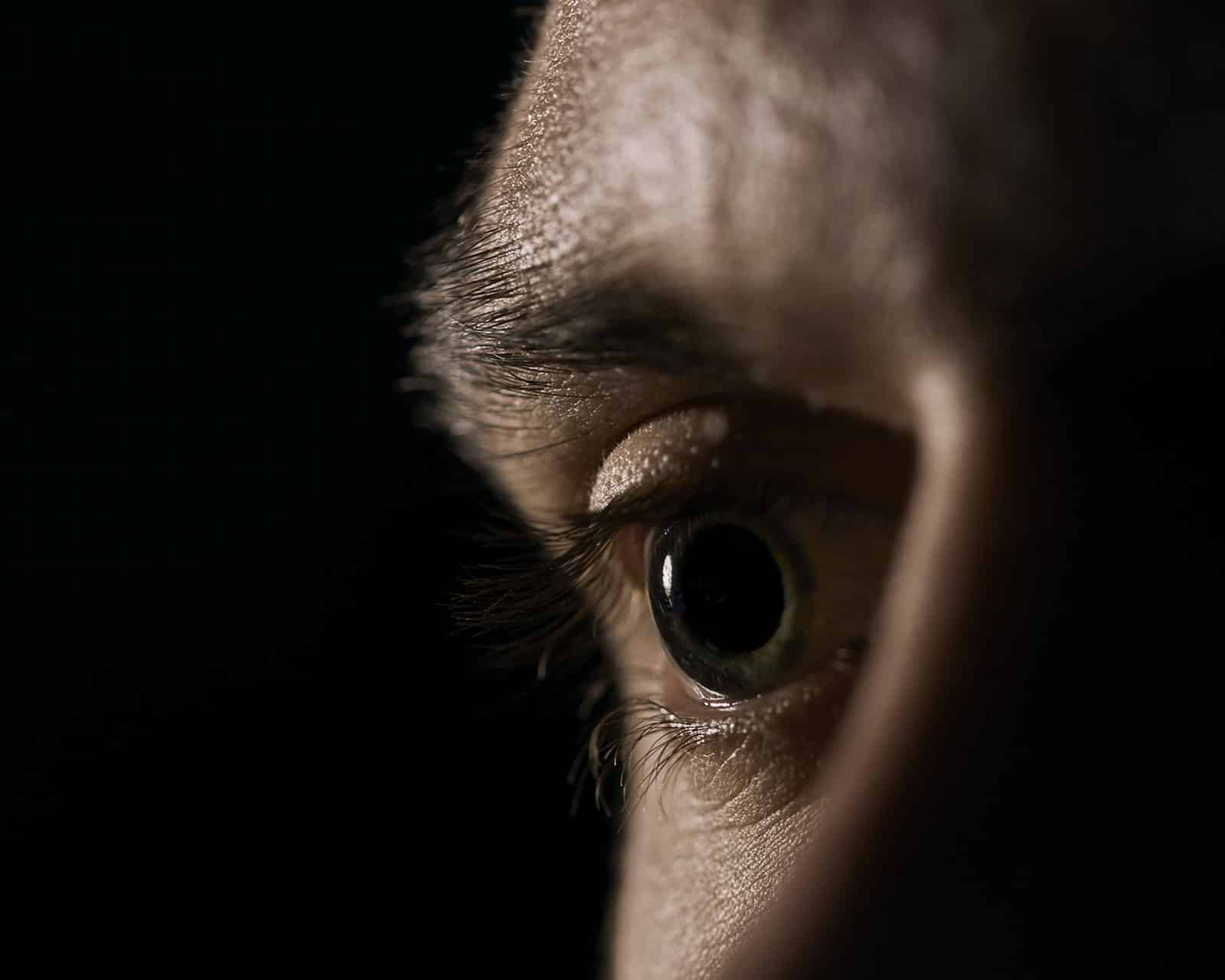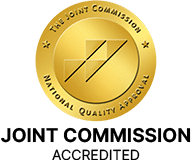The eyes are a window to our souls, so says the old adage. But the truth is, our eyes can give an indication of health in some circumstances. If you or someone you love struggles with addiction, seeing someone who has eyes with the center enlarged, called dilation, can be a red flag. The dilated pupils drugs cause is often a visible sign that a person may have used or abused a substance. And since pupil dilation is a common symptom of drug abuse, understanding which drugs cause this noticeable condition is an important step in helping to navigate addiction. Let’s look at what eye dilation is and which abused substances and over-the-counter (OTC) medicines can cause dilation.

Table of Contents
Internal vs. External Eye Dilation
The central portion of our eyes, called the pupil, contracts or expands for normal, internally caused reasons as well as external circumstances the body experiences. When we are happy to see someone or something, our eyes may dilate as a result of our natural sympathetic system kicking in. This expanded pupil allows us to see the thing, person, or event a little bit better. Our internal fight-or-flight responses work on the same principle, so dangerous or alarming situations can also cause our pupils to dilate. Brain injuries, eye injuries, and some health disorders can also cause this condition.
But not all eye dilation is caused by naturally occurring internal factors or as a result of an illness or injury. External dilation is caused by some prescription drugs or some commonly misused substances. Most of the external causes are drugs that share common characteristics: they are stimulants or psychotropics. Some dilations result from withdrawals as well, rather than the actual drug abuse itself.
Commonly Abused Drugs That Dilate Pupils
When someone you love struggles with addiction, it is wise to watch for signs that they may have fallen into old (or even new) addictive, dangerous behaviors. The dilated pupils’ drugs can usually cause easy to spot since the eyes take on an unnatural look with pupils that do not contract and enlarge when experiencing light changes or as an emotional response. While dilation doesn’t always indicate drug abuse, for the safety and sobriety of those you love, knowing the drugs that could be at the cause of pupil dilation is necessary to assist those suffering from addiction.
Cocaine and crack cocaine
As stimulants, cocaine and crack cocaine produces recognizable “cocaine eyes” that are described as widely dilated pupils. While the dilated pupils drugs cocaine and crack cocaine cause are visible red flags to those struggling with addiction, other visible symptoms of current use may be agitation, elevated heart rate, tremors or muscle twitching, nausea, insomnia, or other disrupted sleep patterns.
Ecstasy (MDMA)
This highly stimulating substance is well known for its ability to dilate the pupils of users. But other common visible red flags may indicate someone is misusing ecstasy or MDMA (a modification of methamphetamine). Some other potential symptoms that may be present along with dilated pupils have increased body temperature and sweating, high energy, or an increase in the need for tactile sensory input (need for touch or touching others). Sometimes teeth clenching, nausea, chills, or sleep disruptions are noticeable in users of these drugs as well.
Ketamine
This narcotic-like drug not only produces dilated pupils but also can create noticeably involuntary eye movements. Those struggling with addiction to ketamine may also appear sedated or calm as this drug’s intended use is as a “dissociative anesthetic” that allows users to feel detached from their pain or environment. Other visible side effects of using ketamine may be salivation, increased tear production, nausea, and stiffening of muscles, in addition to pupil dilation.
Bath Salts
Originally developed as research drugs that were fairly recently sold OTC, bath salts mimic drugs like cocaine, ecstasy, and methamphetamines. Bath salts users will experience pupil dilation, but other visible cues that bath salts are being abused may be a prolonged agitated state, increased energy, trouble sleeping as well as rapid heart rate.
LSD
Those who misuse LSD, also known as acid, will experience not only pupil dilation but also other effects to the nervous system that users will not be able to control, such as distorted equilibrium, disorganized speech, or extreme movement changes like sitting still for hours. Those who are struggling with the misuse of LSD may also unexpectedly become violent or become dangerous for no apparent reason.
Cannabis
Although the exact reasons why are unclear, ingesting marijuana or its key component, THC, will dilate the user’s pupils. This red flag can indicate possible cannabis use, but other visible cues that someone has abused cannabis may be the addition of redness in the eyes as well, a common side effect of using this substance.
Mescaline
This hallucinogenic drug that is derived from a cactus is also known as peyote, buttons, moon, or cactus. Users of mescaline will not only have dilated pupils but may also experience distortions of reality through hallucinations, have a rapid heartbeat, experience “mixed” senses, or become anxious.
Withdrawal from These Drugs Causes Pupil Dilation
Sometimes the drug use itself is not the cause of pupil dilation. Withdrawal symptoms from heroin and other opioids like Oxycontin and Fentanyl can produce dilated pupils during the period of time users stop using the substance, and their body becomes physically free from the substance.
Prescription and OTC Medications That Cause Dilation
Whether these substances are prescribed and used appropriately or used without cause, these commonly prescribed prescriptions and over-the-counter medications can cause eyes to dilate. Most of these substances work by interfering with a person’s neurotransmitters, the chemical messengers in the brain. The neurotransmitters play a part in eye dilation, so the use of any of these OTC or prescription drugs may cause dilation along with producing other side effects to the body.
- Antihistamines These OTC medications are commonly used to treat seasonal, food, and pet allergies. This category of drugs works by blocking the natural body immune response to irritants that trigger allergic symptoms like itching, swelling, or a runny nose. A commonly used OTC antihistamine is Benadryl.
- Decongestants Another common OTC drug type that may cause dilation are decongestants like the Sudafed, which comes in a pill form, or even the nasal spray Afrin. These types of medicines restrict blood vessels in the nose to decrease congestion.
- Antidepressants This class of prescription drugs affects the natural serotonin and norepinephrine, two of the body’s chemical messengers.
- SSRIs are Used to treat depression, anxiety, and PTSD; selective serotonin reuptake inhibitors (SSRIs) are used to enhance the naturally occurring serotonin in the brain. SSRIs are the most commonly prescribed depression medications.
- Benzodiazepines This type of prescription medication is used to treat anxiety, insomnia, and seizures. These medications relax the muscles by affecting a neurotransmitter in the body called GABA.
- Anticholinergics This type of prescription medication works by blocking the body’s ability to contract specific muscles. As a result, these drugs are used commonly to treat COPD, nausea, overactive bladder or incontinence, as well as motion sickness.
- Anticonvulsants/Antiepileptics Phenobarbital is a common barbiturate that is used to affect the nerve impulses in the brain that contribute to epilepsy or other seizure disorders.
- Stimulants commonly used to treat attention deficit hyperactivity disorder, or ADHD, stimulants like Adderall and Ritalin are well known to cause pupil dilation with use.
- Dopamine precursors For movement disorders like Parkinson’s disease, dopamine precursors are used to encourage the neurotransmitter dopamine and, as a result, may cause dilation.
- Mydriatics This medication is specifically intended to dilate the eyes and is used primarily by doctors during eye examinations or eye surgeries.
The Opposite: Pupil Constriction
For every action, there is an opposite reaction. Pupils can constrict and turn into a pinpoint rather than expanding to dilation. Eyes that pinpoint unnaturally (without extreme light exposure) may be the result of an overdose. Consumption of heroin and opioids causes pinpoint pupils, but anyone displaying constricted pupils is at risk of overdosing.
FAQ
Drugs that cause dilated pupils?
Published on: 2022-01-26
Updated on: 2024-06-27



